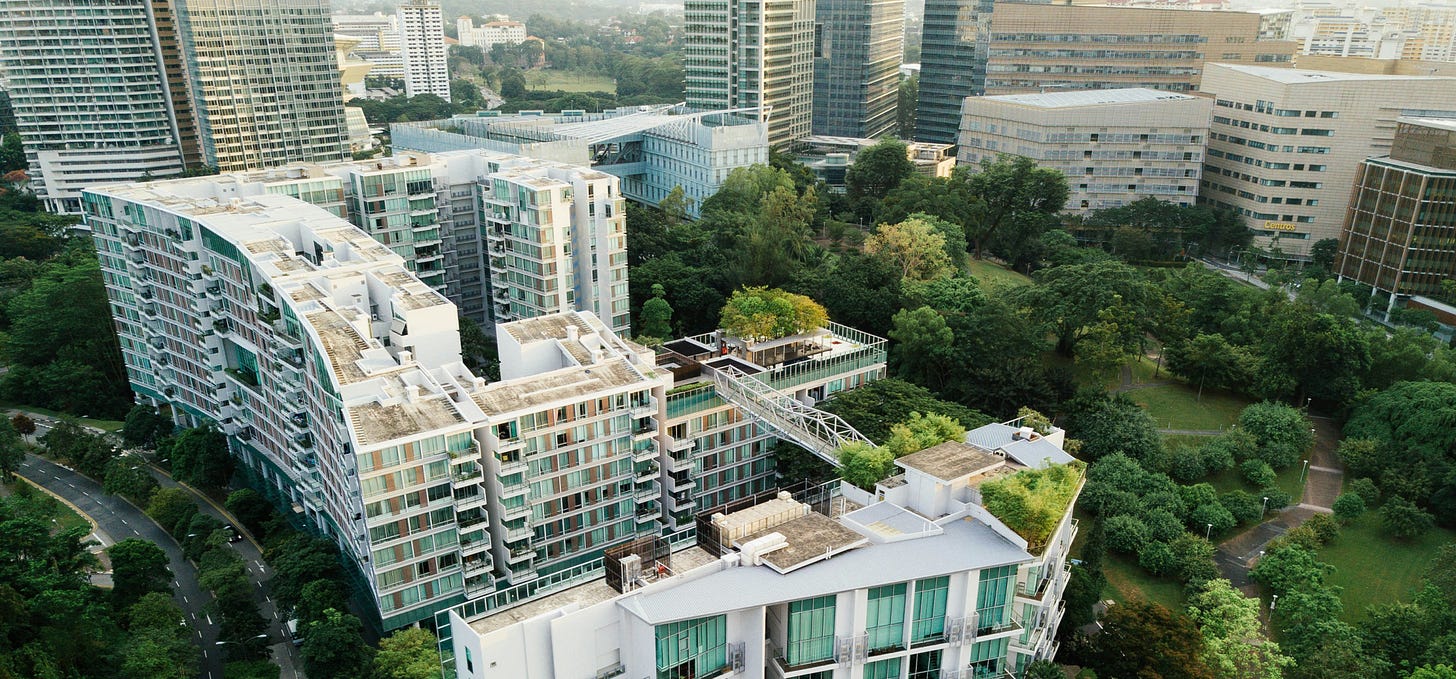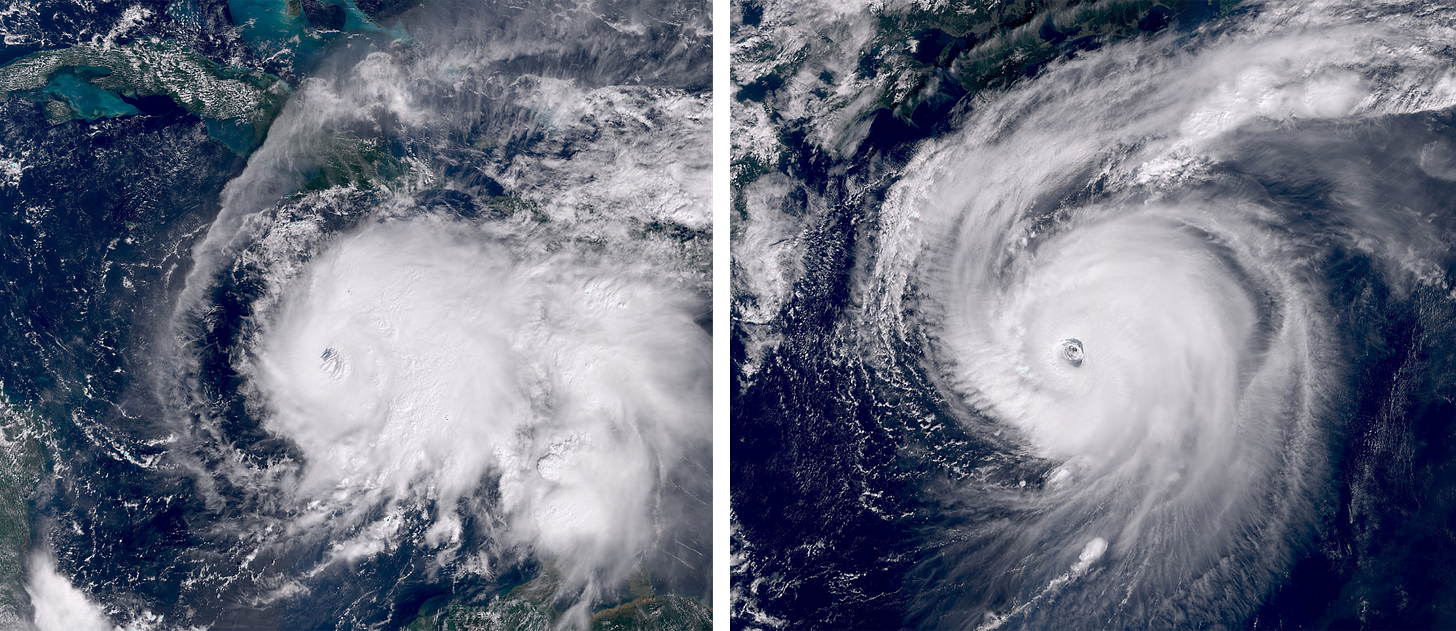$101 Billion in U.S. Weather Disasters — So Far
Greener cities improve lives, billion-dollar disasters are rising, and classrooms drive change
Do you enjoy Talking Climate? If so, I’d be grateful if you’d consider upgrading to a paid subscription. Your support makes it possible for me and my small team to share the stories, science, and solutions you love — and to create even more! In a world where support for climate science is shrinking, your contribution helps fill the gaps and reminds us why this work matters. I’m so proud of the exclusive content we have coming up, and I can’t wait to share it with you.
I’ve written before about how trees and green spaces can reduce urban flooding from heavy rainfall events, as well as about how planting more trees can keep communities cool in a warming world. But are more biodiverse cities healthier for the people who live there?
The answer to this question is, according to a new review of 1,550 existing papers, a resounding yes! This is very important news, since it’s estimated that 70 percent of people will live in cities by the middle of this century.
Greener cities with large parks, gardens, and mature trees benefit urban residents in numerous ways - by giving them spaces for exercise, improving people’s mental health, helping children as they develop, and reducing exposure to pollution and extreme heat. People who live in areas with larger parks also had lower rates of lung cancer, fewer sleep difficulties, and lower mortality.
The review also found that there are some tradeoffs when it comes to people versus biodiversity in cities. Specifically, they found that “sports fields and trails in parks can negatively impact habitat and disrupt wildlife behaviour.” However, they add that “careful attention to minimizing tensions and trade-offs could help to reduce the potential for conflict between biodiversity and human health objectives.”
This is a great example of how there are so many win-win-win solutions for people, nature and climate that remain to be implemented. Despite what Bill Gates claimed in his latest memo, we are still many years away from having to choose between solutions that address one but not the other. There are so many practical, positive actions that improve human well-being and tackle climate at the same time: and this is one of them!
One of the most visible ways climate change affects us today is by super-charging extreme weather events: and this year has been no exception.
Last month, the remnants of Typhoon Halong battered Western Alaska’s Yukon-Kuskokwim Delta, causing widespread flooding and leading to the evacuation of many remote villages. “Several of these villages have been completely devastated, absolutely flooded, several feet deep,” Capt. Christopher Culpepper, the U.S. Coast Guard commander for Western Alaska, said. “Folks were swimming, floating, trying to find debris to hold onto in the cover of darkness.” These villages were already facing climate-change fueled melting permafrost, sea level rise, and coastal erosion, and now they have to rebuild entire villages from scratch.
Then, just last week, Hurricane Melissa intensified rapidly into a massive Category 5 storm before hitting the island of Jamaica, more than doubling its wind speed in less than 24 hours. There have been dozens of lives lost and widespread damage in Cuba, Haiti, and especially Jamaica. Communication and power remain down over much of the island, and images show homes flattened, debris scattered, and neighborhoods still submerged in floodwaters.
In the U.S., the first six months of 2025 saw record damage from weather and climate disasters, according to new calculations from Climate Central: 14 disasters totalling over $100 billion in damage. This was the most for the first half of any year since record keeping began in 1980.
Climate change isn’t creating hurricanes or typhoons out of thin air, but it’s making the ones that do form far more dangerous. Warmer oceans feed hurricanes more energy, higher sea levels worsen flooding, and warmer air holds more moisture.
Together, all of these factors are turning what used to be rare disasters into regular, record-breaking ones. And every fraction of a degree of warming we prevent helps reduce that risk in the future!
Want to help children to learn more about climate change? SubjectToClimate is an amazing nonprofit that curates and hosts a wealth of free K-12 lesson plans developed by teachers about climate change. Parents, you can share these lesson plans with your child’s school or teachers.
The site also features self-paced courses for educators that equip them to teach about climate change, and guidance for school administrators and school boards looking to add or scale up climate education on their campuses.
Margaret Wang-Aghania, the nonprofit’s co-founder, explains its mission: “If we make it easier for educators to integrate climate into what they already teach, students will gain knowledge, shift their attitudes, and take action. Research shows that when students learn about climate change, they reduce their own emissions, influence their families, and strengthen community resilience.”
SubjectToClimate also has a partnership with The Juice Learning, where students in grades 5 to 12 can read news stories about climate change tailored to their reading level. Each story includes a quiz question at the end to test reading comprehension. Here’s one recent story about renewable energy outpacing fossil fuels globally for the first time - check it out!
Thurs, Nov 6th at 6pm ET - Sacred Synergies by Spirit & Place - in person or virtual - click here to learn more and reserve your spot today.








